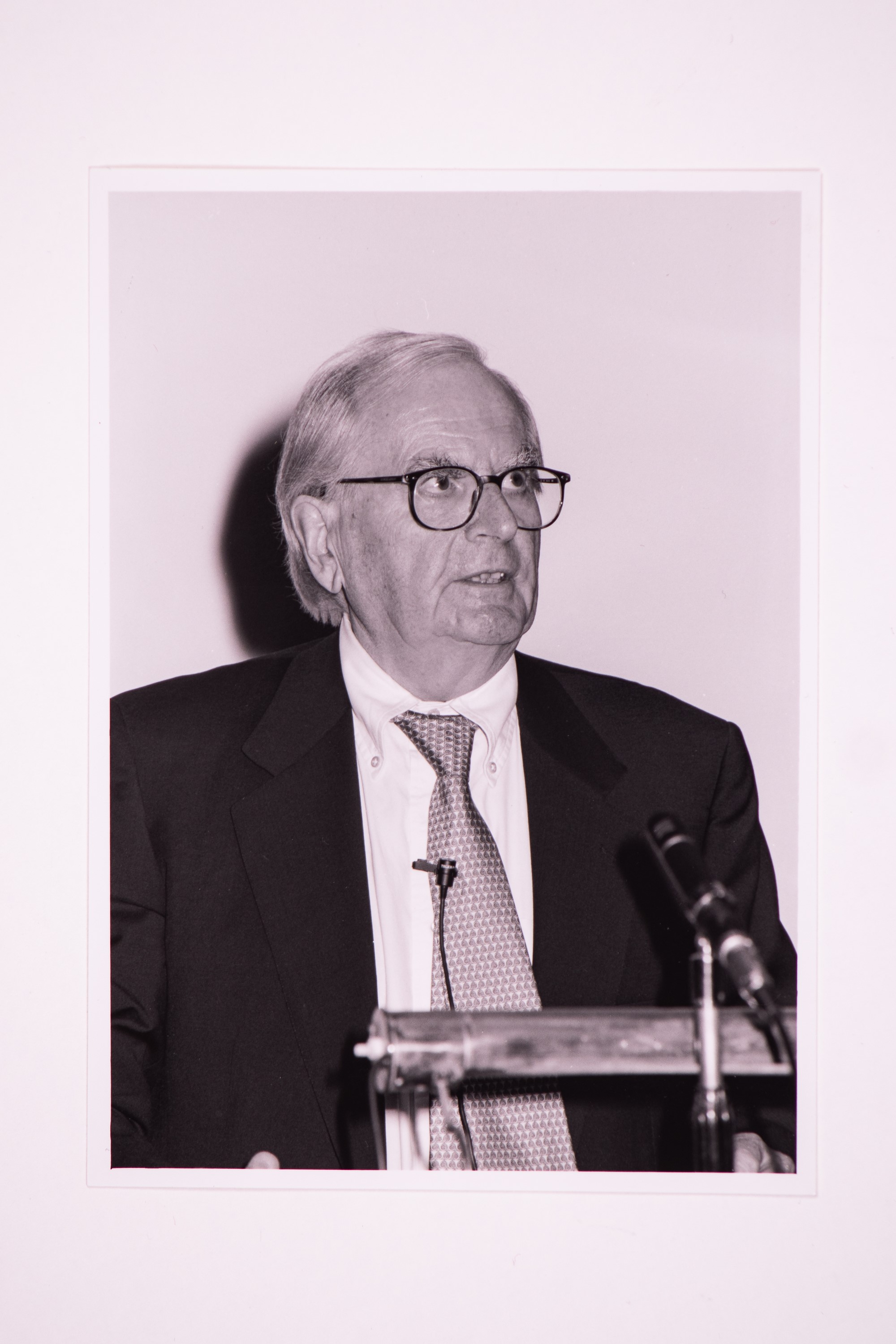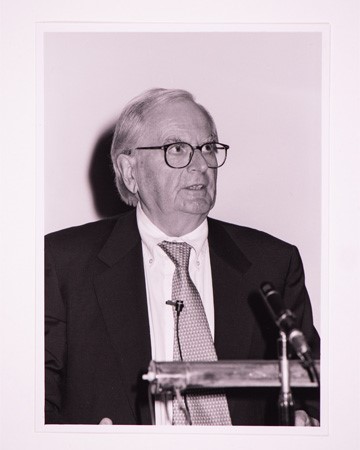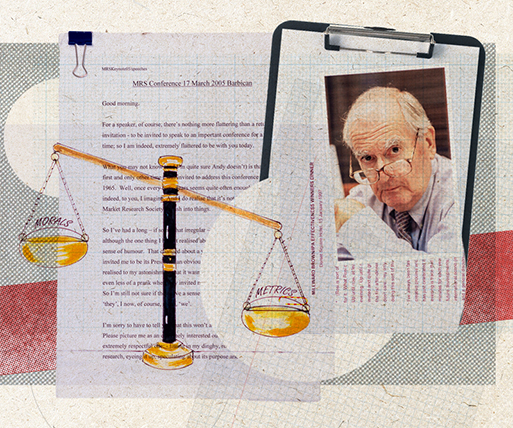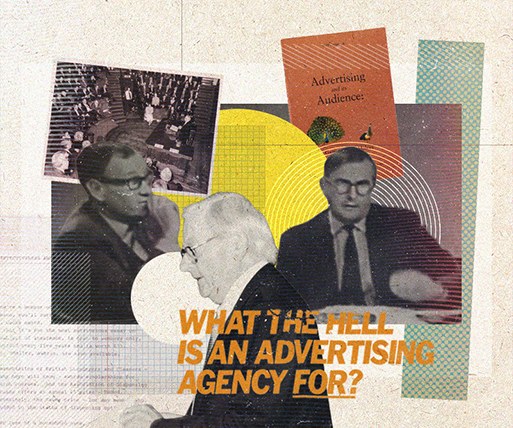What are advertising agencies for? 1992
- Date: 1992
- Publisher: IPA
- COMMUNICATIONS
As an Effectiveness Awards judge, Jeremy delivered a speech reminding the IPA Conference of the basics: the nature of brands, the value of advertising and agencies.
Edited version of the speech to IPA Conference, October 1992
This is the second most daunting thing I’ve been asked to do by the IPA this year - so I thought I’d spend most of my time talking about the most daunting thing I was asked to do by the IPA this year. This has two advantages: one, thrift; and two, more surprisingly, relevance.
The most daunting thing I was asked to do was to be one of the judges of the 1992 IPA Advertising Effectiveness Awards. Now, at some considerable risk to my own reputation – particularly throughout the fairly dreadful 1980s – I’ve always been strongly and openly in favour of these awards; and this was a highly risky attitude to adopt because that was the time, you will remember, when to be openly in favour of advertising effectiveness was to declare yourself tyrannically opposed to something called creativity.
To those of you over 50 or under 25, that may seem a statement of extreme improbability – but the rest of you will know it’s true.
Advertising agencies publicly wondered aloud whether they should position themselves as ‘marketing’ agencies - meaning, presumably, that they should concern themselves with their clients’ businesses; or as ‘creative’ agencies - meaning, presumably, that they should concern themselves only with the number of creative awards they could acquire. The concept of creativeness and the concept of effectiveness became alternatives, or worse. As Bernard Barnett wrote in Campaign as recently as November 1991: “I am fed up with the increasingly common treatment of ‘creativity’ and ‘effectiveness’ as antonyms.”
But while creativity and effectiveness are certainly not antonyms, neither of course are they synonyms.
A very long time ago, four of us from different advertising agencies made a cheap little black-and-white film called Risk & Responsibility. It was introduced and compered by Ronnie Kirkwood and practically the first thing he did in the film was to show the camera the front page of the Daily Express and say (and I paraphrase):
“Whichever agency buys this space, the cost to the client is going to be about the same. However, the value to that client of buying that space will vary enormously – according to which words and which pictures he decides to fill it with.”
The word ‘creativity’ can mean a lot of things to a lot of people: but at least in its very limited advertising sense, (which is all we should be talking about this morning) it can surely mean only one quite specific thing. It means the inventiveness and the skill with which some thousands-of pounds-worth of space or time, which if left blank would be worthless, can be coaxed into returning more than that sum to the advertiser. The more creative the advertisement, the greater the return.
Effectiveness is about why you advertise: you want to have an effect. Creativity is about how you advertise. Neither antonyms nor synonyms: the first is an end - and the second a means to that end.
Such art as there is in advertising is an applied art: it is there to do something, to achieve something. It may, incidentally, be admired for itself; and that may have a secondary value to the advertiser. But it must never, never be the primary aim. It is never an end in itself.
Which is why the task of helping to judge this year’s IPA Effectiveness Awards, though certainly daunting and even more time-consuming, has, to my considerable astonishment, been as exciting for me as being on a treasure-hunt. And it seemed to me, in trying to clarify what value today’s agencies can bring to today’s clients, it would be a great deal better to talk about the certainties of some of these specific, rock-solid, recent achievements than to embark on any number of chunterchunter generalities.
In each of the thirty or more short-listed submissions, all closely argued and running to several thousand words each, a clear and common pattern emerges.
First: an objective is defined - and that’s the first shocking reminder: shocking because we keep on forgetting it: just how varied advertising objectives can be. They may be as simple as wanting more people to buy more things more often – but only very seldom. From the shortlist alone, here are a few, more or-less-from memory: to present a new car model so that it appeals to a group of people known to be indifferent to the marque; to protect margins; to bring a brand with an old-fashioned image up-todate; to help insurance brokers, the intermediaries, find ready acceptance when proposing a particular insurance policy to the public; to increase the number of visitors to Whipsnade; to raise money for Save the Children; to slow the decline of the door-to-door milkman; to enter a market; to prevent a competitor from entering a market; to attract fewer, higher spending customers; to persuade more parents to have their children inoculated; to prevent the Canadian Government from culling seals.
It’s very clear from these papers that the defining of a realistic advertising objective is already part of the creative process – and that an agency begins to earn its money as soon as it brings its imagination to bear even at this stage.
And then, second in this common pattern, after the objective, comes the idea – quite often, the Big Idea. In every single one of the papers I’ve read, the Big Idea is just introduced. Fascinatingly, nobody ever attempts to explain how those ideas came about in the first place. They are all miraculous virgin births - which only after the event can be seen to make sense.
And I make that point not to mock. Any paper that pretended to explain the logical, linear process of thought that led to an original advertising idea would almost certainly be misleading if not actually a lie. But it’s still a bit of a pity, it seems to me: that the advertising agency’s greatest single justification for existence – the generation of ideas that contribute so powerfully to the advertisers’ own aims – should have to be so perfunctorily covered.
All we know is that, by some mysterious process, somebody somewhere thought of the dancing milk bottles; and Stella’s ‘reassuringly expensive’; and the Haagen-Dazs couple who can think of nothing but ice cream; and Renault’s Nicole and Papa; and Skip-a-Lunch for Save the Children; and the Andrex puppy; and the wonderful misfortunes of Scottish Amicable. In every one of those shortlisted submissions, there’s an idea that more than paid for itself. And that, of course, is not just the view of the agency concerned: it’s a view held with equal certainty by the people who paid for it all - the clients – without whose willing agreement these entries could never have been submitted.
And in some of these true stories there are examples of ideas which have gone on for years and years: protecting margins, contributing to profit, confirming loyalty, resisting competitive challenges and lending authority to brand extensions. Someone, for example, should give a special award to the late and remarkable Leo Burnett for inventing, as long ago as 1936, the Jolly Green Giant: an improbable character who must have contributed many billions of dollars to the Minnesota Valley Canning Company.
But for me, the really telling lesson that comes through virtually every one of these remarkable stories is yet another reminder: a reminder about the nature of brands and the contribution that grown-up advertising can make to them.
Because the best of the ideas I’ve talked about, and many that I haven’t, are not just advertising ideas: they’re brand ideas.
They provide the most potent of clues from which consumers, real people, can construct in their heads and their hearts a simple and coherent assessment of objects as inanimate as a can of sweetcorn or as intangible as an insurance company.
The word brand has become so fashionable that we’ve stopped thinking what it means; we now use it almost interchangeably with the word product. And the inevitable consequence of this piece of mental laziness can be seen in a great deal of advertising which seems not even to have tried to epitomise clearly defined brand values but is content to be simply product advertising.
So the style of these advertisements is not the style of the brand: it is the style of the film director or the art director or the last-but-one award winner. And so opportunities are missed, and money is wasted.
In good brand advertising, every single executional decision is taken consciously and for a good reason. Certainty about the unique nature of a brand (and if its nature isn’t unique, then it isn’t a brand) means that the typeface, the voice-over, the casting, the colours, the prose style, the size and length ofthe ad itself: every single element, however apparently insignificant, combines with the others to contribute to and strengthen that particular brand’s competitive personality. Because it’s that competitive personality that makes it more desirable, that makes it good value, that inspires affection as well as respect, and that allows it to make a perennial nonsense of product life-cycle theories.
It must, of course, be the advertiser’s responsibility to see that a competitive brand personality is first developed and then meticulously tended and nourished: it’s one of the most precious assets a business has – and you can’t (or shouldn’t) subcontract responsibility for it. But of all an advertiser’s many suppliers, an advertising agency should be the one best positioned and best equipped to help it invent that personality – and then, through the kind of idea we’ve been talking about, give it life and potency and expression.
And it seems to me to be almost self-evident that, the greater the changes we see happening all round us, in both kind and number, the more important that central agency contribution will become.
More choice means more consumer confusion, which means a greater need for brand distinction. More media mean more messages, which means a greater need for brand clarity. More international competition means higher entry costs for new products, which means a greater need for brand strength in both depth and breadth.
Increasing costs and competition mean there will be far fewer free-standing brands launched in the future. Those orphan brands, who seem to have no parents. New brands, to pay back, will need a heritage, an authority, to be seen to have come from a decent family. So in many ways, the battle for consumer respect and affection will become a battle between companies: and every marketing company will need to pay as much attention to its own, competitive corporate personality as it has traditionally paid to the personalities of its competing brands.
At the same time, service companies – particularly, perhaps, financial services – will be looking to achieve the same objective: an overall, distinctive and competitive personality that contributes crucially to the profitable marketing of nearparity products; because that’s when the development of its own positioning, the hunt for its own desired personality, can most benefit from the introduction of communications, from words and sounds and pictures and ideas.
I sense, however, that this is not happening; that, if anything, the advertiser/agency relationship has become less close and less central. If so, it is equally bad news for both parties: never, in my view, have marketing companies been more in need of informed and inspired communications.
If I’m right, and the value of advertising and advertising agencies has become less rather than more apparent to advertisers, there's one possible explanation that occurs to me
-
and I’ll call it the Lesson of the Frozen Lasagne.
One of the submissions to this year's IPA Advertising Effectiveness Awards tells the story of the Frozen Lasagne that increased its sales by 180%, going from fourth brand to first in the same period.
Convincingly, much of the credit for this remarkable achievement is attributed to a particular television commercial and the interesting thing about that commercial is this: against a great deal of conventional wisdom, it didn’t put the case for this particular Lasagne: it just showed very engagingly how Frozen Lasagne as such meets the needs of today’s fragmented families. Until that point, all the competing Lasagnes had been so totally preoccupied with pointing up their differences and their own particular advantages that consumers, real people, remained reasonably unenthusiastic about the sector in general: no-one had reminded them of the glories and satisfactions of the market as a whole.
I do hope that you won’t be too distressed at being compared to Frozen Lasagnas: but I think it probable that we all have much to learn from them.
We’ve all been so busy promoting our own agencies, our own differences, our own particular philosophies and facilities, that our consumers – advertisers – have remained reasonably unenthusiastic about the sector in general: no-one has reminded them of the values and the glories of the market as a whole. If this full day at Canary Wharf is the beginnings of an attempt to rectify that omission, and if it’s half as successful as the frozen lasagnes were, we shall all have much to smile about in a couple of years’ time.





